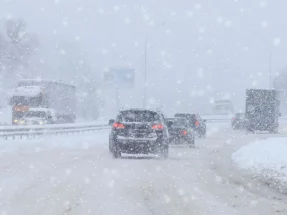Tornado Communications: Three Steps to Keeping Residents Informed When a Tornado Threatens Your Community
Tornadoes can strike unexpectedly, but you can still send emergency alerts to your residents.
According to the Center for Disaster Philanthropy, 82 Americans died in 2023 due to tornadoes. When it comes to these deadly forces of nature, the common causes of tornado-related deaths and injuries involve flying or falling debris or being picked up or blown by the tornado, two threats that can cause head injuries, chest trauma, or other complications. Most injuries and deaths occur to individuals who are outside, in apartment buildings, or mobile homes, compared with individuals who are inside houses. With tornadoes, like many other natural disasters, the greatest way to save lives is with early notification. By allowing residents to get indoors to a safe place before the tornado hits, you’ll stand a better chance of minimizing fatalities. Keep reading for advice on tornado communication strategies for public safety communicators.
The Integrated Public Alert and Warning System (IPAWS)
Communities that utilize a government emergency notification system that integrates with IPAWS can amplify their emergency communications and reach as many residents as possible with critical news, updates, and instructions. IPAWS helps emergency managers create and distribute local emergency notifications through all the nation’s available alert and warning channels. Its capabilities include:
- The Emergency alert system (EAS) broadcasts to AM/FM radios and public televisions.
- Wireless Emergency Alerts (WEA) sent to capable wireless devices.
- National Oceanic and Atmospheric Administration (NOAA) weather radio alerts.
- Local sirens.
- Digital signs.
- Other local and unique systems.
Tornado Communication Best Practices
When tornado predictions threaten your community, there are three critical steps to minimizing casualties: communicate early, reach as many people in the area as possible, and provide actionable instructions.
Communicate Early
As soon as you know a tornado is possible, implement your communication strategy as efficiently as possible. If you need to create the same message multiple times using different communication distribution systems, you’ll lose time with every duplicative effort. If you utilize a mass notification system that integrates with IPAWS, you can craft a single alert message that is sent immediately via:
- Email to subscribed residents
- Text message/SMS alert to subscribed residents
- Phone call to subscribed residents
- Social media
- Your local government website
- AM/FM radios
- Public televisions
- NOAA weather radios
- Digital highway signage
A mass notification system that integrates with IPAWS can send notifications to cell phones without being delayed by network congestion. It can interrupt local TV and radio broadcasts to share essential notifications. It can even instantaneously post notifications to digital road signs and various other locations.
Amplify Your Reach
A benefit of IPAWS, when a tornado is threatening to touch down, is that it allows you to reach not just residents who have signed up to receive emergency alerts but travelers in the immediate area via regional broadcast stations, outdoor digital signage, weather radios, and wireless devices capable of receiving WEA alerts.
The most powerful mass notification systems will also allow you to reach residents and travelers who may be in your area and the vicinity of the tornado using the Environmental System Research Institute’s (ESRI) mapping technology. Such capabilities allow you to draw a multi-point polygon shape on a map of your community to define the boundaries of your message. By defining a geographical communication area, you have the greatest flexibility and control to ensure anyone remotely near the tornado’s path will receive an alert.
Provide Actionable Instructions
If a tornado is coming, your residents need to know more than its trajectory. They need actionable, life-saving information. When sending communications to residents, primarily via text, social media, or email, keep the content brief. Provide clearly written information and a link for where residents can find more information. Preferably, direct them to your local government website for information on:
- The location of local shelters
- Natural disaster preparation tips
- Contact information for local resources, such as utility companies, emergency responders, and local police departments
Recovery Communications
Remember to continue communicating safety information after the tornado has ended. Even if your community sustains only minimal damage, your residents will still want to know what aspects of their community and their resources have been impacted, what areas are damaged, what roads are closed, and who to contact with questions or for immediate assistance.
With an immediate and actionable communication strategy and the tools available to help you reach as many residents and visitors in the tornado’s path as possible, you’ll be best positioned to keep your residents informed and safe.


